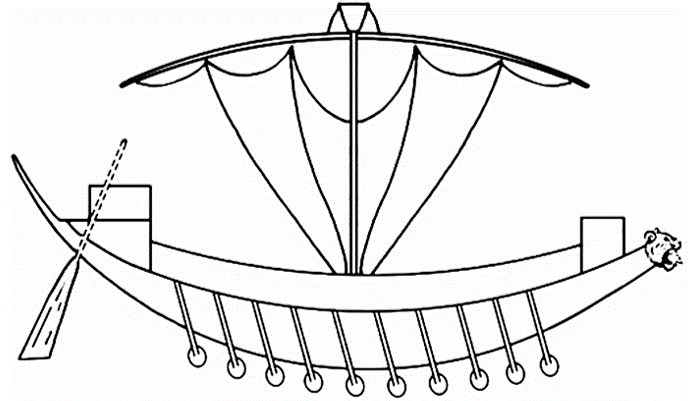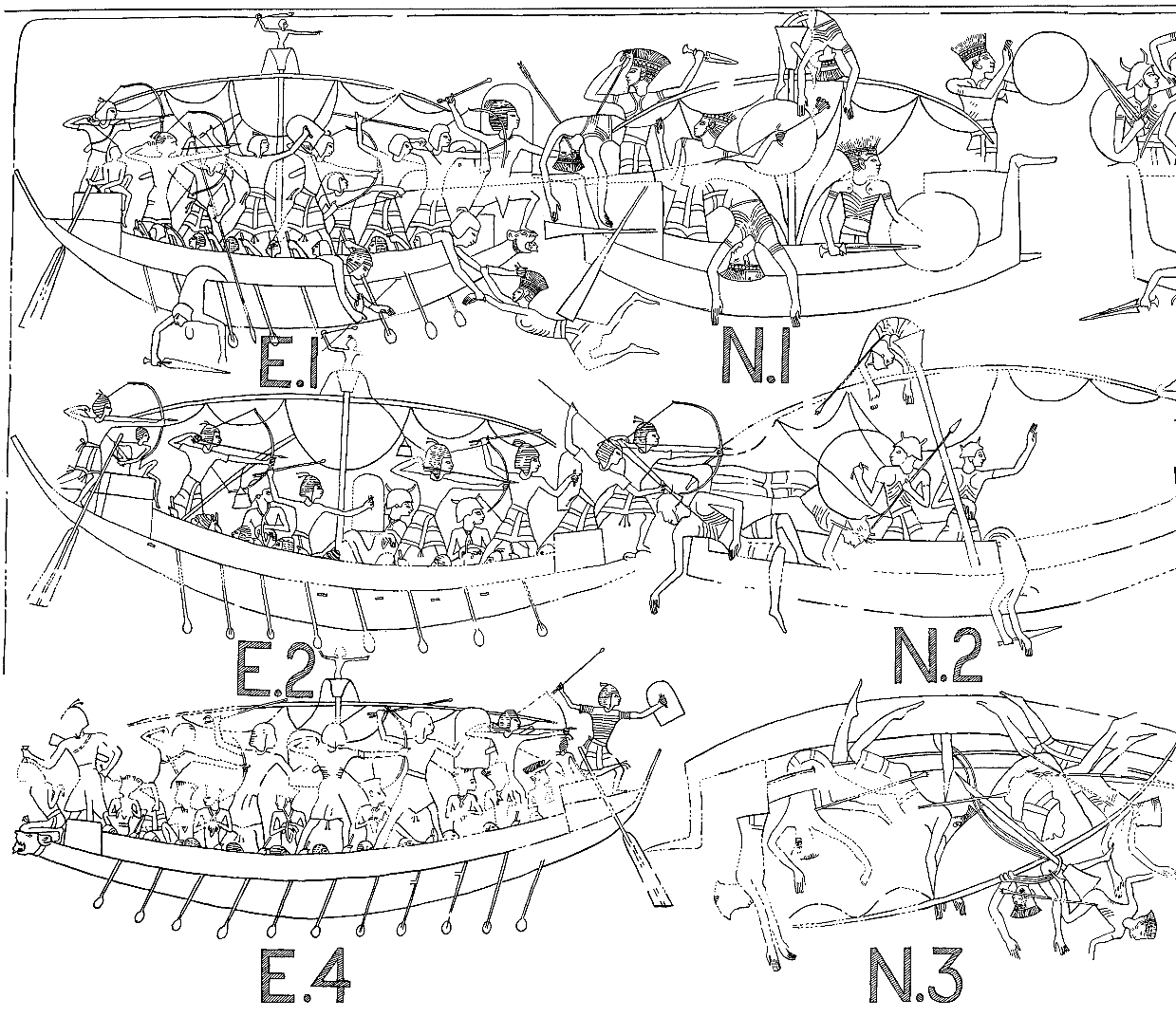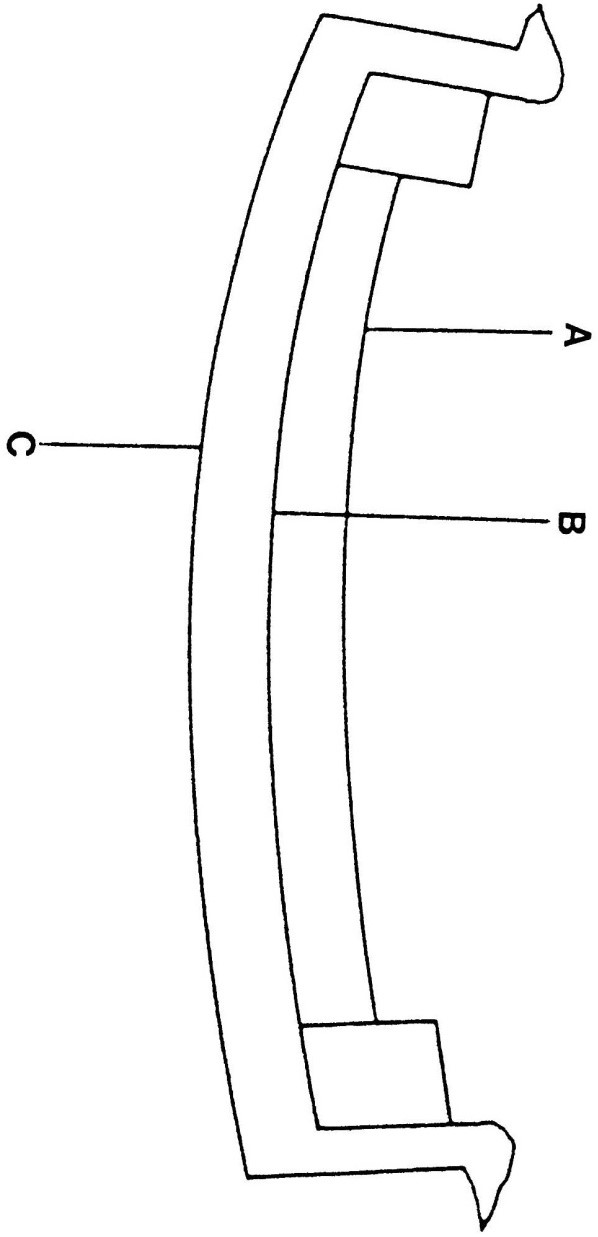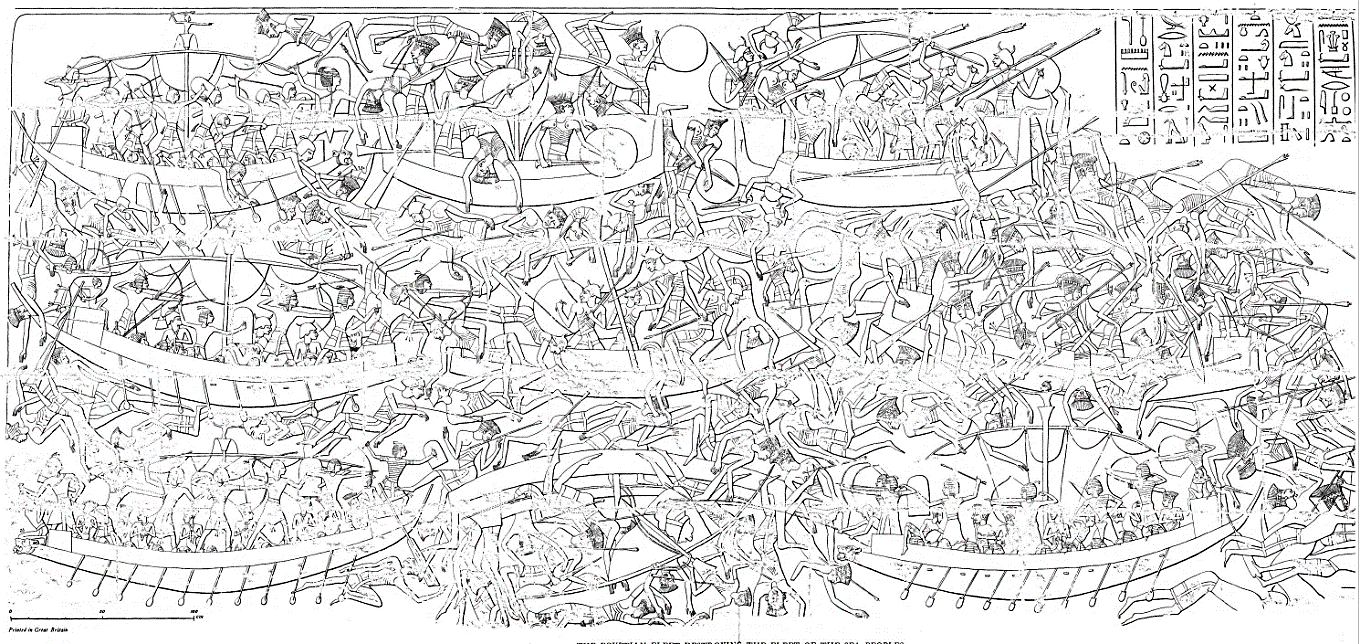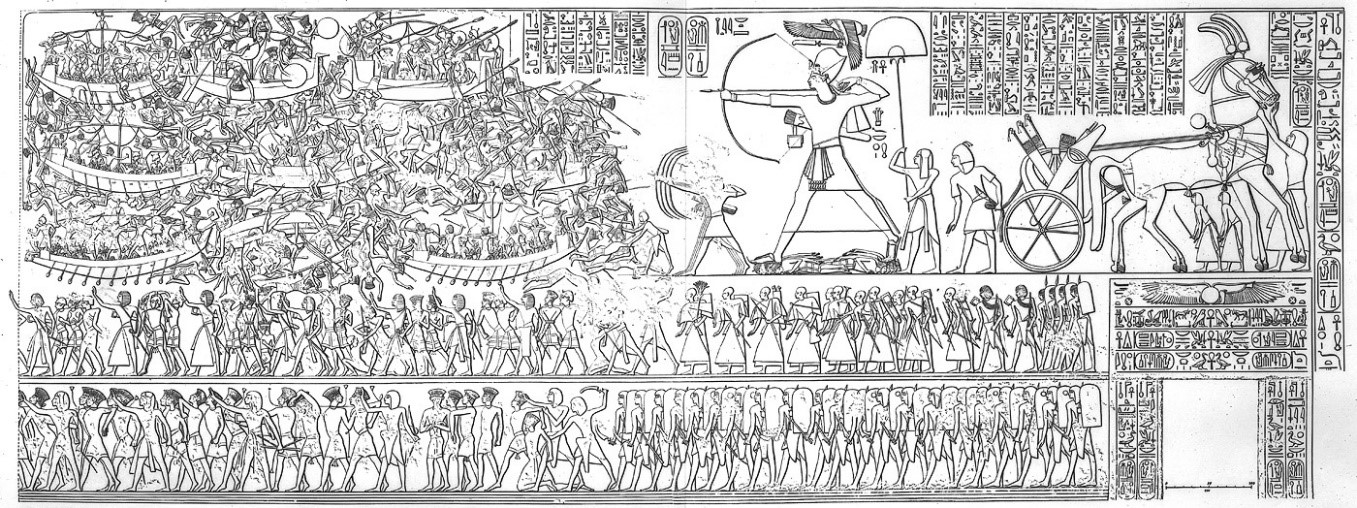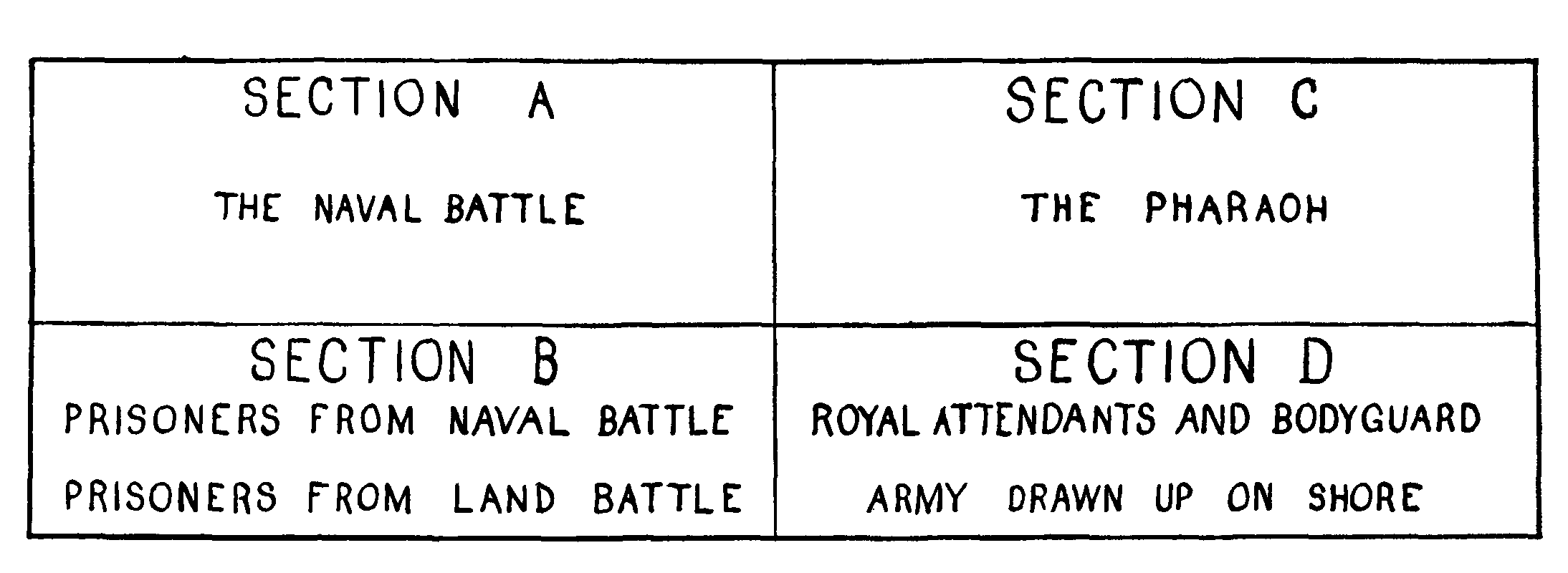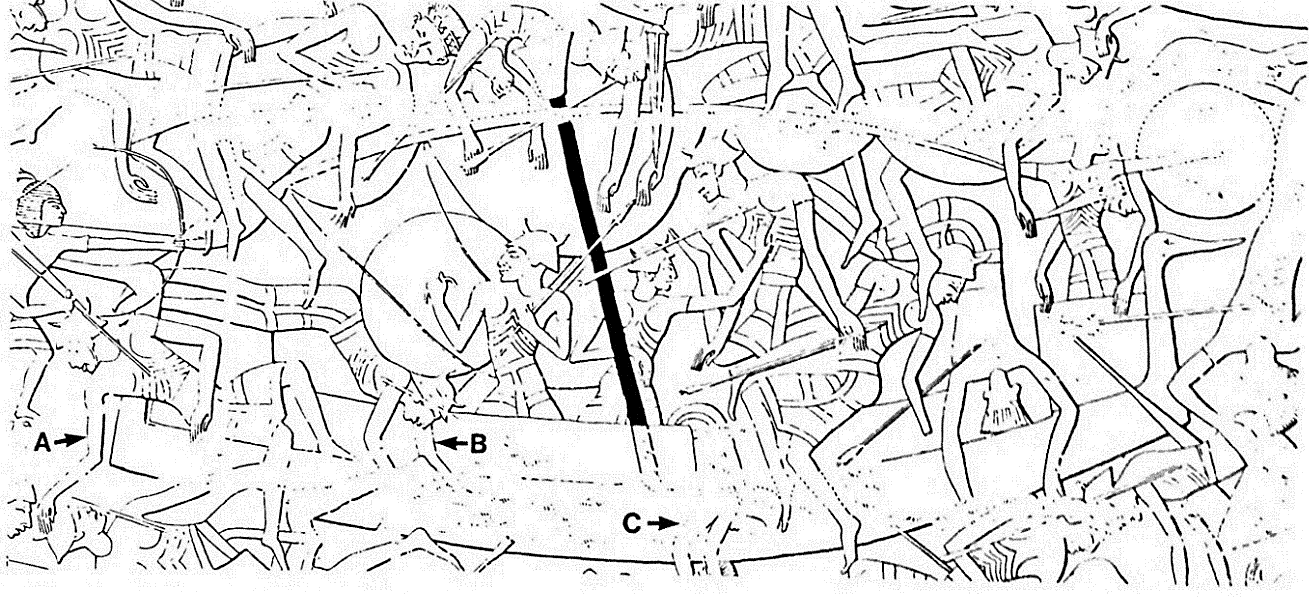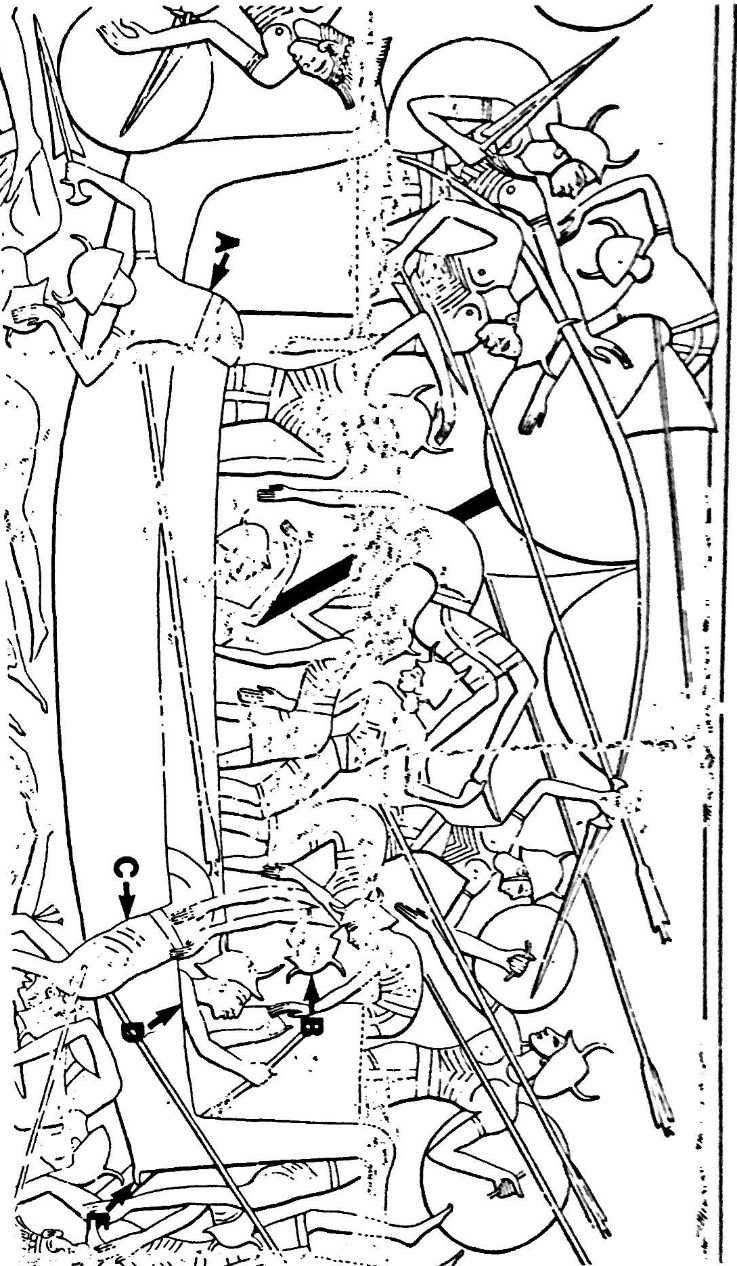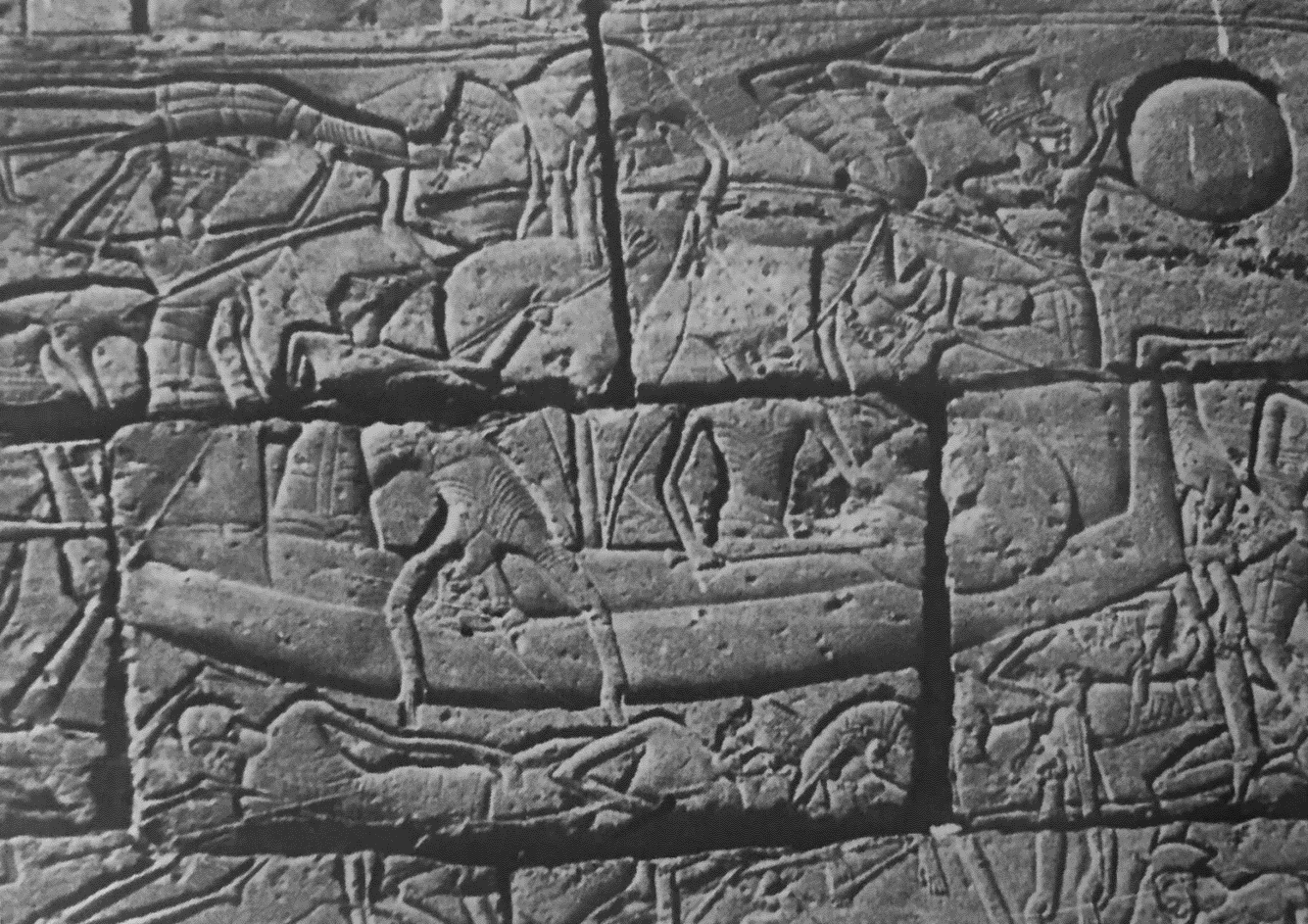Naval battle between the Egyptian forces and a
coalition of various Sea Peoples (Peleshet, Sikila, Denyen, Shekelesh)
in the eight year of the reign of Ramses III (ca. 1176 B.C.). The relief
is situated on the outer wall of the mortuary temple at Medinet Habu,
and is part of seven scenes in total recording the war with the
northerners, of which five pertain to the historical narrative itself:
1) the "reception center" where soldiers were drafted, registered and
equipped; 2) the march out to meet the enemy forces; 3) the engagement
with invaders on land; 4) the sea battle with the enemy fleet; 5) the
celebration victory. The naval battle relief is flanked by the
celebration of victory to its left, and a lion hunt to its right. The
relief furthermore has four subdivisions, with the naval battle itself
occupying the upper left corner. The scene shows five enemy ships facing
four Egyptian ships. One of the enemy ships is capsized. The scene can
be summarized by the following salient points:
- Each side depicts a single ship prototype that was replicated to
produce a fleet. The Sea People's ships have a bird head device
decorating both stems, while the Egyptian ships have a prow decorative
device comprised of the head of a lioness grasping the head of an
Asiatic in her mouth.
- Several elements parallel the accompanying text which suggests that
the Sea People were caught in an ambush in an enclosed waterway,
possibly somewhere in the Nile Delta. On both sides the vessels have
their sails furled to the yard. The Egyptian ships however are still
under oars, while the foreign ships are dead in the water, their oars
stored. The fact that the enemy was caught off guard is further
highlighted by the chaotic state of their vessels compared to the
orderly advance of the Egyptians. In the context of the narrative and
ideological purposes of the relief, the scene depicts not so much the
actual battle but rather the divinely pre-ordained massacre of Egypt's
enemies (O'Connor 2000: 95).
- The artist has interwoven various phases of the battle, each
illustrated by the confrontation of a vessel from either side: the
beginning of the battle, shown by Egyptian ship E. 1 and Sea Peoples
ship N. 1; the middle phase illustrated by ship E. 2 and N. 2; and the
end of the battle represented by E. 3 and N. 3. The final stage consists
of ship E. 4 which is loaded with shackled prisoners being led to a
victory celebration.
- The attacking enemy forces are all armed with swords, spears and
round shields. The artists distinguish two types of foreigners
differentiated by their attire. These are grouped in fighting units by
ship according to their origin. Two ships are manned by warriors wearing
horned helmets, while three ships have warriors with feathered hats.
- The Medinet Habu reliefs are unique for the vivid nature of the
encounter which departs to a certain degree from conventional Egyptian
art. Emphasis is placed on the variations in features and various
expressions of fear, distress, or anguish.
Technical reliability factors & preservation:
1) The scene is stereotyped, with a minimal number of elements deemed
sufficient to distinguish the enemy forces from the Egyptian army. Each
faction shows a single ship that was repeated to produce a fleet. The
number of ships is likewise kept at a minimum, dictated by the
requirements of the narrative. This minimalist, generalizing portrayal
is best illustrated when contrasted with the text. Thus an inscription
on the Second Pylon at Medinet Habu indicates that on the Egyptian side
at least three classes of ships took part in the battle, whereas only
one is depicted. Likewise, the text mentions four different groups of
Sea Peoples, but only two are depicted in the relief.
2) Artists took part in Egyptian campaigns and trading expeditions
outside the borders of Egypt. It is therefore possible that a field
artist was present, allowing him to execute a sketch that later served
as a master copy. Examples of this include the foreign fauna and flora
in Thutmose's III botanical garden at Karnak, as well as the Red Sea
marine life depicted beneath Hatshepsut's punt ships.
3) Egyptian artists were likely able to closely examine the Sea People
captives. This is confirmed by the precision and fidelity in their
portrayal of the headgear and body armour of the warriors which finds
almost identical parallels in different media from Cyprus. Knowledge of
the enemy vessels however may have been second hand rather than direct.
No captured ships are reported, although these cannot be excluded.
4) The device decorating the posts of the Sea Peoples' vessels was
perceived as distinguishing feature by the Egyptian artist, similarly to
the two different types of enemy head gear.
5) The Egyptian artist did not differentiate between the relief and the
painting. This is confirmed by another, better preserved war scene from
Medinet Habu, which shows that the bare sculpture was supplemented
extensively with painted details that enrich the composition. The fact
that the paint is gone thus means that many aids to the interpretation
of the ships are now lost, with the relief preserving only the skeleton
of the original work. This likely explains why some elements of the sea
people's ships are not represented consistently, as they were presumably
applied in paint in some cases, while they were both carved and painted
in others. In addition, plaster was widely used both to make corrections
and to cover up defects in the masonry. In some instances only the
initial draft of the design is preserved, with the final modifications
into the plaster gone. Thus there are numerous elements which disappear
in some parts. Wachsmann points out the brails of ship N. 2 which appear
only on the left side of the mast, or the missing eye on the bird device
at the stern of ship N. 5. Likewise the quarter rudders of the Sea
People's ships lack tillers, which were originally painted.
6) Despite the likelihood of a master artist guiding the general
organization of the relief, the carving was most probably carried out by
multiple hands. There are several identifiable artists' errors in the
vessels 'construction. The mast erroneously crosses area AB in ship N. 2
and area AX in ship N. 3, although they are correctly shown in ships N.
1, N. 4 and N. 5. Likewise on ship E. 1 one of the soldiers bending over
to grasp a sword from a corpse is shown leaning in an impossible manner,
his upper body sandwiched between the sheer and the screen of the ship.
7) the figures are depicted on a scale larger than the ships. The actual
length of the ships is therefore difficult to determine.



